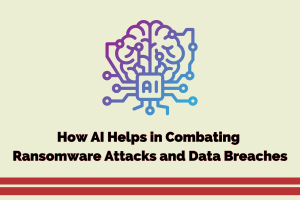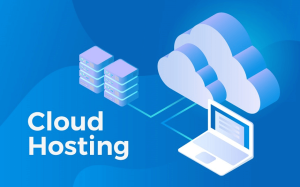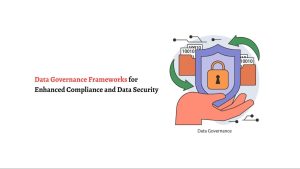Why is Data Standardization important for Your Business Growth?

Gone are the days when data used by businesses was in limited quantity and was considered inefficient to what it’s available today. But in today’s tech-driven landscape, organizations are flooded with voluminous data, containing data types, inconsistent patterns, and poorly structured data. Subsequently, correcting these errors and inefficiencies will consume significant time and effort that may lead to increased operational cost, poor business decisions, unreachable customers, and more.
That’s why outsourcing data standardization is inevitable! With the right data standardization technique, your data can be processed, analyzed, and compared efficiently.
Understanding Data Standardization
Data standardization refers to the method that ensures each data type must have the same content and structure in order to be deemed standardized data, making them simpler to manage and analyze.
Let’s take an instance to understand!
If an organization has customers’ DOB in the format, I.e. MM/DD/YYYY in one system while the other system has the format Year, Month, and date. It would eventually lead to format inconsistency and if even a single date is mismatched in the records, data inconsistency shall occur..
In addition to these prevalent aspects, data standardization flaws in your datasets might be exacerbated by typos, transcription errors, and a lack of validation requirements.
Why is Data Standardization Important?
Every system has a unique set of constraints, which produces distinct data models and their definitions. Because of this, you might need to alter data before any business process can use it properly.
1. Merge Organizations to Remove Duplicates
One of the largest risks to data quality that businesses face is data duplication. Eliminating duplicate entries for the same item (whether a customer, product, location, or employee) is necessary for productive and error-free business operations, and an efficient data deduplication process necessitates that you adhere to data quality standards.
2. Share Data Between Departments
Data must be presented in a way that is clear to everyone if it is to be shared between departments. Most businesses have customer information in CRMs that the sales and marketing staff can understand. This may cause delays in task completion and productivity barriers for the team.
3. Ensure Data Relevancy
There are numerous interfaces within an organization where data points from partners or vendors that are external stakeholders are exchanged. It is essential to conform data to the requisite standard whenever it enters or leaves an enterprise; otherwise, the unstandardized data jumble only becomes worse.
Before heading to the steps to standardize data, let’s discuss what business benefits it offers.
Potential Benefits of Utilizing Data Standardization Technique
Listed below are the business benefits of outsourcing data standardization. Let’s discuss them in detail!
Benefit#1: Enhanced Productivity
Data standardization offers clear and structured data records, saving laborers valuable time, which is one of its main advantages. When the team will not have to waste their time on inaccurate or obsolete information, they can focus on core business operations. It will ultimately lead to improved work productivity of an organization.
Benefit #2: Cost Reduction
Organizations arguably collect data in different formats that are conducive to potential errors. Some of them include spelling mistakes, misuse of abbreviations, formatting issues, duplicates, and more. With data standardization, one can easily eliminate these common mistakes and reduce the upfront cost that arises due to data inconsistencies.
Benefit #3: Improved Customer Acquisition
It is no secret that accurate, cleansed, and standardized data can help in the entire marketing process of an organization. When you use the usual data cleansing services, it brings better returns on your email or postal campaigns.
Benefit #4: Collaborative Analysis
Standardized data is good for collaborative studies because it enables organizations to work from a single point of view and create precise and reliable criteria from which to examine and evaluate data to draw unbiased results.
Benefit #5: Better Business Decisions
Regardless of the advancement of analytics or business intelligence software, it will not bring you the much-needed insights. On the other hand, choosing the cleansed and standardized data will fetch the relevant and structured insights that you may need to make informed business decisions.
How to Perform Data Standardization?
For proper data analysis, standardized data is necessary; having other data to compare your present data makes it simpler to make conclusions about it. Data loses a lot of the meaning it was intended to have without standardization approaches, even though they may differ based on specific efforts.
1. Define a Standard
You must first determine which standard best suits your organization’s requirements. Creating an enterprise data model is the best way to create a standard. The ideal condition to which the data values for a particular entity must adhere will be represented by this data model. Organizations must take into account a variety of factors, such as the volume and purpose of the data being gathered.
- Identifying data assets
- Define the Data Fields
- Assign a Data Type
- Define Character Limits
- Define the Pattern
- Define the Format
- Define the Measuring Unit
- Define the Value Domain
| Note: To better visualize the established standard for each data asset and how they connect to one another, a developed data model can then be added to an ERD class diagram. |
2. Don’t Overlook Testing Standards
Data standardization, the second step, focuses on identifying the data that you should occasionally perform.
Knowing your data entry points enables you to evaluate the accuracy of your data, identify any issues with data standardization, and plan for how to address such issues during data processing or cleaning.
- Parsing records and attributes
- Building Data Profile Report
- Matching & Validating Patterns
- Using Dictionaries
- Testing addresses for standardization
3. Set Up a Survey
When creating your survey, take data standardization into account if you are gathering your own data. Always begin data collection in a standard, understandable format. To ensure that data is reported in the same format and in accordance with the existing standards, don’t forget to implement data validation.
4. Comprehend and Purify Your Data
Once you’ve collected your data, examine its values and structure. Before you commit it to your data annotation services and before you act on that data, be sure it is accurate, clean, comprehensive, structured, and checked.
- Changing patterns and formats
- Expanding Abbreviated Values
- Removing Noise
- Reconstructing the Values
4. Prioritize Retesting
It is advised to employ pre-existing questions, procedures, standards, and data formats whenever it is practical and reasonable to do so. You’ll be able to contrast fresh data with historical data. You can simply see which data inaccuracies were corrected by the preset processes and how they might be modified for better business outcomes with before and after standardization reports.
Many companies are discovering how crucial it is to give their workers self-service data standards solutions with built-in data cleansing services. By using such technologies, your team may quickly perform intricate data standardization and cleansing operations on millions of entries.
Conclusion
In 2022 and beyond, outsourcing data standardization will be crucial; if done right, it will position you, your teams, and your company for long-term success. Controlling that data becomes more crucial as there is more of it. A proper standardization process speeds up data analysis and interpretation, resulting in more practical insights and, hopefully, better and more well-informed decision-making.
Author bio:- Jessica Campbell is an eCommerce Consultant and a Professional Content Strategist at Data4Amazon, a leading organization providing end-to-end Amazon consulting and marketplace management services. For over 7+ years, she has been writing about best practices, tips, and ways to enhance brand visibility and boost sales on the Amazon marketplace. So far, she has written several articles on Amazon listing optimization, Amazon PPC Services, Amazon SEO & marketing, Amazon store setup, Amazon product data entry, and more. She holds 12+ years of copywriting experience and has helped thousands of businesses and Amazon sellers build their presence in the marketplace, reach new customers, and register better sales & conversions through the power of a well-built copy.






